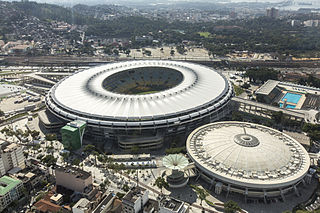
The Rugby Championship is an international rugby union competition contested annually by Argentina, Australia, New Zealand, and South Africa. Prior to the 2012 tournament, when Argentina joined, it was known as the Tri Nations. These are the four highest ranked national teams in the Southern Hemisphere, the Six Nations is a similar tournament in the Northern Hemisphere. The competition is administered by SANZAAR, a consortium consisting of four national governing bodies: the South African Rugby Union, New Zealand Rugby Union, Rugby Australia and the Argentine Rugby Union The inaugural Tri Nations tournament was in 1996, and was won by New Zealand – known as the All Blacks. South Africa won their first title in 1998, and Australia their first in 2000. Following the last Tri Nations tournament in 2011, New Zealand had won ten championships, with South Africa and Australia on three titles each. The first Rugby Championship was won by New Zealand, who won all six of their matches.

The World Rugby Pacific Challenge, formerly the IRB Pacific Rugby Cup, is an annual rugby union football tournament held in Oceania since 2006. It is contested by national 'A' teams from the Asia-Pacific region. The tournament is run by World Rugby through Oceania Rugby.
The Nations Cup is a rugby union competition that was first held in 2006 at Estádio Universitário in Lisbon with Argentina A, Italy A, Portugal and Russia taking part. The tournament is part of the International Rugby Board's US $50 million Strategic Investment programme, which also includes the Pacific Nations Cup, the Pacific Rugby Cup and the Americas Rugby Championship.

The Chile national rugby union team, nicknamed Los Cóndores, plays in red jerseys and blue shorts, and is organised by the Chilean Rugby Federation. As of 2019, Chile has not qualified for a Rugby World Cup.

The Colombia national rugby union team is classified as a tier three nation by the International Rugby Board (IRB). They have thus far not qualified for a Rugby World Cup, but have participated in qualifying tournaments. Colombia made their debut against Mexico in 1996. In 2018, the Colombians won their first significant international honour, winning the inaugural Americas Rugby Challenge, the 'B' championship to the Americas Rugby Championship.
South American Rugby Championship refers to the continental rugby championships for South America, organized by Sudamérica Rugby. The current name of the championships is South American Six Nations, implemented in 2018. Throughout history, South American Championships have also exist for lower divisions of the rugby union championships, as well as youth and women tournaments, and editions for rugby sevens.

Association football is the most popular sport in almost all South American countries. There are a wide range of sports played in the continent of South America. Popular sports include baseball, basketball, rugby union, tennis, golf, volleyball, hockey, beach volleyball, motorsports and cricket.

The Americas Rugby Championship, often informally called the Americas' Six Nations, is an annual international rugby tournament between six North and South American nations: Argentina, Brazil, Canada, Chile, the United States and Uruguay. Originally competed by various interlocking combinations of club, second-tier national and top national sides, the current international tournament has the top national sides competing. The current format provides these top national teams with additional test matches to be counted in the World Rugby Rankings.
The 2011 South American Rugby Championship "A" was the 33rd edition of the two tiered competition of the leading national rugby union teams in South America.
The 1951 South American Rugby Championship was the first edition of the two tiered competition of the leading national Rugby Union teams in South America.
The 1971 South American Rugby Championship was the seventh edition of the competition of the leading national Rugby Union teams in South America.
The 1973 South American Rugby Championship was the eighth edition of the competition of the leading national Rugby Union teams in South America.
The 1975 South American Rugby Championship was the ninth edition of the competition of the leading national Rugby Union teams in South America.
The 1977 South American Rugby Championship was the tenth edition of the competition of the leading national Rugby Union teams in South America.
The 1979 South American Rugby Championship was the eleventh edition of the competition of the leading national Rugby Union teams in South America.
The 1981 South American Rugby Championship was the twelfth edition of the competition of the leading national Rugby Union teams in South America.
The 1989 South American Rugby Championship was the 16th edition of the competition of the leading national Rugby Union teams in South America.
The 2003 South American Rugby Championship was the 25th edition of the competition of the leading national Rugby Union teams in South America.
The 2005 South American Rugby Championship was the 27th edition of the competition of the leading national Rugby Union teams in South America.
The 2006 South American Rugby Championship was the 28th edition of the competition of the leading national Rugby Union teams in South America.





